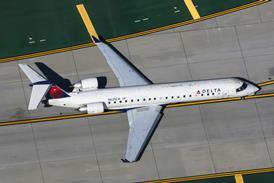Eastern Russian authorities are urging operators to improve their awareness of adverse weather operations after two serious thunderstorm-related incidents in the space of three days involving Khabarovsk Airlines Antonov An-24s.
One aircraft unintentionally flew into a heavy hailstorm at 17,000ft while operating a Tynda-Khabarovsk service on 17 July. The aircraft (RA-46643), which was 400km from its destination, suffered damage to its radome and inspection found evidence of lightning strikes on its right-hand elevator.
Three days later, on 20 July, another An-24 (RA-47367) operated by the same carrier encountered mild icing at 18,000ft some 150km from Khabarovsk while en route from Nikolaevsk-on-Amur.
The crew sought to descend out of the icing conditions to 16,000ft but flew into turbulence and a hailstorm, also sustaining damage to its radome.
Analysis by the federal Aviation Register of Russia of incidents in which aircraft have been damaged by lightning indicates most occurrences take place between May and September, typically when thunderstorms are present in the vicinity of departure and destination airports, particularly on the approach path.
The main causes of these events include non-compliance by crews with rules governing flight in areas of thunderstorm activity, and failure to maintain distances from cumulonimbus clouds and lightning discharge.
Rosaviatsia highlights “insufficient experience” of pilots in such regions and ineffective use of on-board weather radar to detect hazards – as well as a lack of pre-flight analysis of meteorological forecasts. The regulator also points out that weak involvement from air traffic management can increase the risks.


























